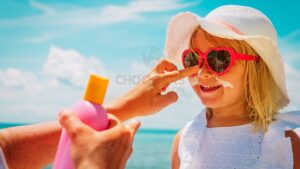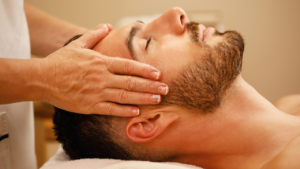Introduction:
In the world of beauty and personal care, first impressions are paramount. When clients walk into a salon, they expect a certain level of professionalism and expertise. A significant part of this first impression is shaped by the appearance of the salon staff. That’s where a well-thought-out dress code and uniforms come into play. This article delves into the significance of maintaining a consistent dress code for salon staff, highlighting its importance in terms of professionalism and branding.
Significance:
1. Professionalism:
The beauty industry thrives on trust. Clients are entrusting salon staff with their appearance, whether it’s a haircut, a facial, or a makeup application. A consistent dress code exudes professionalism and competence. It signals to clients that the staff takes their roles seriously and adheres to a standard of excellence. It builds a sense of trust and assurance, which is invaluable in the salon business.
2. Branding:
Every salon has its unique brand identity. Whether it’s a luxury spa, a trendy urban salon, or a family-friendly barbershop, the brand is conveyed through the staff’s attire. Uniforms and dress codes allow the salon to communicate its brand message effectively. A spa might opt for serene, muted colors and calming uniforms, while a trendy salon could go for fashionable, edgy outfits. These choices shape the client’s perception of the salon and determine whether they feel the ambiance aligns with their expectations.
3. Consistency:
In a salon, consistency matters. A uniform or dress code ensures that all staff members present a consistent image. This consistency is crucial for branding, and it’s also beneficial for the clients. They can easily identify staff members and know whom to approach for assistance. This helps in creating an organized and efficient environment.
4. Hygiene and Cleanliness:
Cleanliness is at the heart of the beauty industry. Salons must maintain the highest standards of hygiene. Uniforms can be designed with this in mind, featuring materials that are easy to clean and maintain. This contributes to the overall cleanliness and tidiness of the salon, a factor that clients deeply appreciate.
5. Team Cohesion:
A unified appearance fosters a sense of unity among the staff. When everyone adheres to the same dress code or wears the same uniform, it promotes a feeling of equality and teamwork. Staff members feel like they are part of a cohesive team working towards a common goal – to provide top-notch services to clients.
Corns:
While salon staff uniforms and dress codes offer numerous benefits, they are not without their drawbacks. Here are the cons of implementing such standards:
Expense:
One of the primary disadvantages of salon staff uniforms and dress codes is the cost. Creating, purchasing, and maintaining uniforms can be a significant expense for salons, especially smaller businesses. The initial investment includes designing, producing, and acquiring uniforms for all staff members. Over time, these uniforms may wear out or require replacement, incurring additional costs. The financial burden of implementing and maintaining uniforms can strain a salon’s budget, particularly for businesses with limited resources.
Limited Individuality:
Uniforms and strict dress codes leave limited room for individuality in attire. Some staff members may find it restrictive to conform to a predetermined dress code. While uniforms are intended to maintain a consistent and professional appearance, they can stifle personal expression. Employees who value expressing their individual style or creativity through clothing may feel constrained, potentially leading to reduced job satisfaction.
Enforcement Challenges:
Enforcing a dress code can be challenging. Not all staff members may willingly comply with the set standards, which can lead to issues within the team. Dress code violations may require management intervention and discipline, taking up time and resources that could be better allocated to other aspects of salon operation. The enforcement process can also strain relationships between employees and management.
Conclusion:
Salon staff uniforms and dress codes are more than just attire; they represent professionalism, branding, and client experience. They set the tone for the client’s salon journey and establish a strong brand identity in the competitive beauty industry. Despite the potential challenges, the benefits of implementing and maintaining a consistent dress code for salon staff are far-reaching and enhance the overall client experience.
FAQs (frequently-asked questions)
Uniforms and dress codes are essential in salons to maintain professionalism, hygiene, and a consistent brand image.
Typical salon staff uniforms include smocks, aprons, branded attire, and closed-toe shoes. The specifics vary by salon.
Some salons allow staff to add personal touches within dress code boundaries, while others require strict adherence to a uniform look.
Benefits include reinforcing the salon’s brand, creating a professional appearance, ensuring hygiene, and providing a safe work environment.
Some cons include the cost of uniforms, the challenge of maintaining cleanliness, and potential resistance from staff.
Salon owners can choose uniform styles, colors, and accessories that reflect their salon’s unique identity and values.
Dress codes help prevent hair and other debris from coming into contact with clothing, promoting cleanliness and hygiene.
Many salons welcome staff input and suggestions regarding uniforms and dress codes to create a comfortable working environment.
Legal requirements vary by location. It’s essential to check local labor laws and health regulations regarding uniforms and dress codes.
Balancing uniformity and individuality is achievable by allowing staff to personalize within specific guidelines and by providing options within the dress code.




